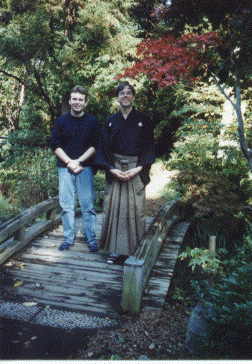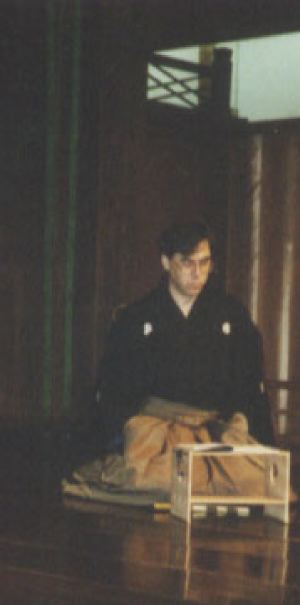
(larger photo)
Kuraki Noh Theatre
Yokohama (96.11.04)
Yokohama (96.11.04)
Kuraki Noh Theatre
 |
This photograph was taken on the day of the annual performance of the amateur noh group to which I belong. Pascal Masse, an exchange student at Meiji Gakuin from Aix-en-Provence, France, came to watch (poor soul). I am wearing formal costume, mon-tsuki hakama. On this occasion I sang the lead shite in the play Tadanori, based on incidents related in the Heike monogatari. Another member of the group sang the part of the waki, a priest, while five others including a professional sang the musically difficult part of the chorus (jiutai). This kind of unaccompanied singing is called su-utai. It is fascinating to do, but there is not much for spectator to watch (otsukaresama, Pascal-kun). Except for picking up and putting down the fan, there are no gestures. It is, however, a hobby enjoyed by thousands in Japan. |
|
(larger photo)
|
Kuraki Noh Theatre
Yokohama (96.11.04) |
 |
mon-tsuki hakama. 紋付き袴
|